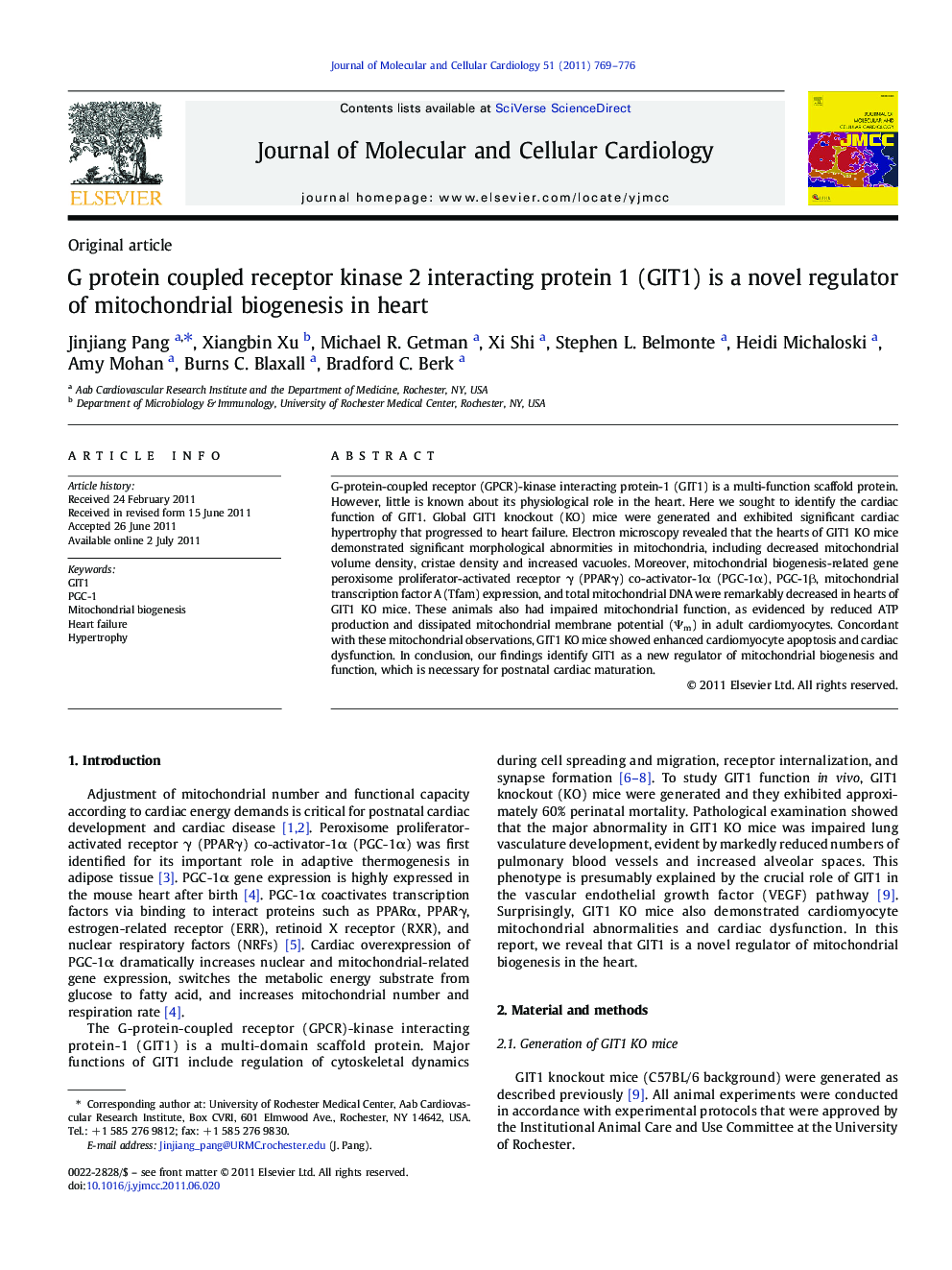| Article ID | Journal | Published Year | Pages | File Type |
|---|---|---|---|---|
| 2190751 | Journal of Molecular and Cellular Cardiology | 2011 | 8 Pages |
G-protein-coupled receptor (GPCR)-kinase interacting protein-1 (GIT1) is a multi-function scaffold protein. However, little is known about its physiological role in the heart. Here we sought to identify the cardiac function of GIT1. Global GIT1 knockout (KO) mice were generated and exhibited significant cardiac hypertrophy that progressed to heart failure. Electron microscopy revealed that the hearts of GIT1 KO mice demonstrated significant morphological abnormities in mitochondria, including decreased mitochondrial volume density, cristae density and increased vacuoles. Moreover, mitochondrial biogenesis-related gene peroxisome proliferator-activated receptor γ (PPARγ) co-activator-1α (PGC-1α), PGC-1β, mitochondrial transcription factor A (Tfam) expression, and total mitochondrial DNA were remarkably decreased in hearts of GIT1 KO mice. These animals also had impaired mitochondrial function, as evidenced by reduced ATP production and dissipated mitochondrial membrane potential (Ψm) in adult cardiomyocytes. Concordant with these mitochondrial observations, GIT1 KO mice showed enhanced cardiomyocyte apoptosis and cardiac dysfunction. In conclusion, our findings identify GIT1 as a new regulator of mitochondrial biogenesis and function, which is necessary for postnatal cardiac maturation.
► GIT1 KO mice exhibited cardiac hypertrophy and heart failure. ► Mitochondrial biogenesis was impaired in the hearts of GIT1 KO mice. ► PGC-1α expression was decreased in the hearts of GIT1 KO mice. ► GIT1 KO mice showed decreased mitochondrial function and increased apoptosis.
